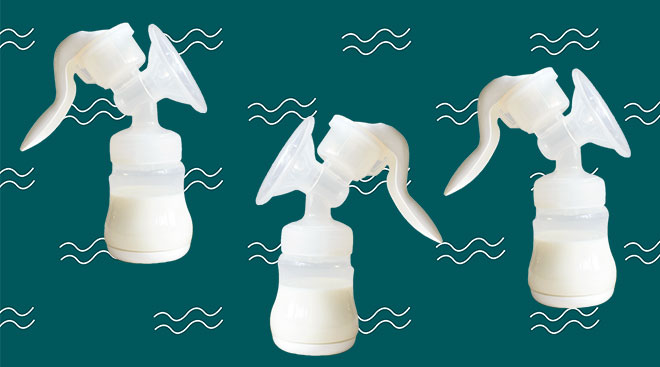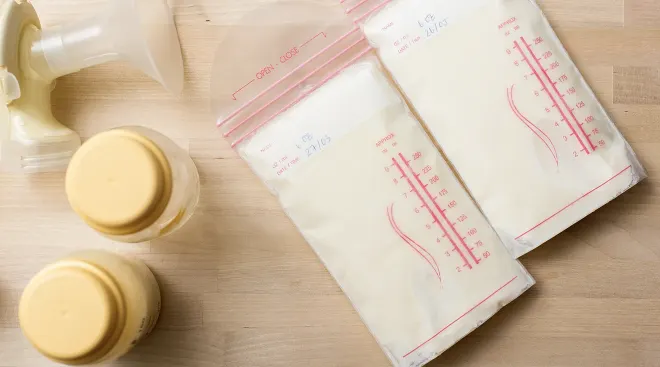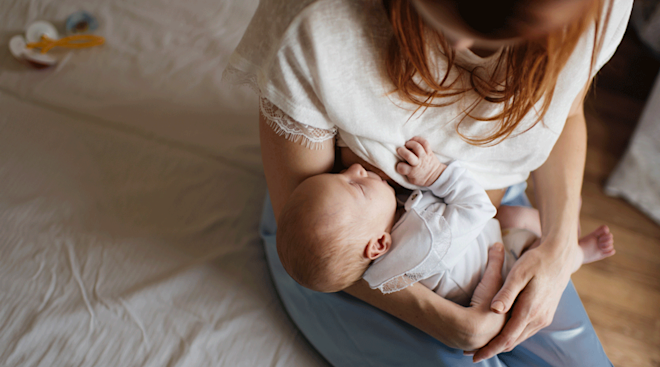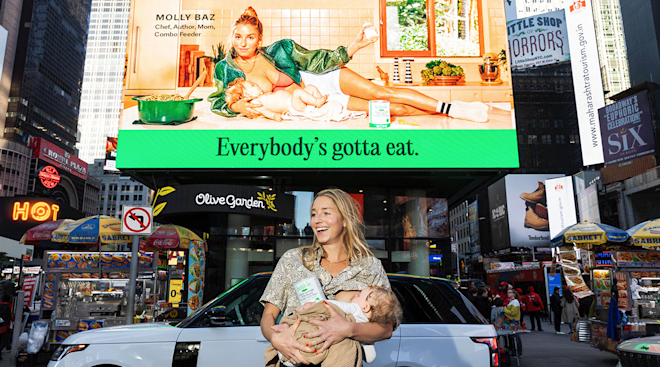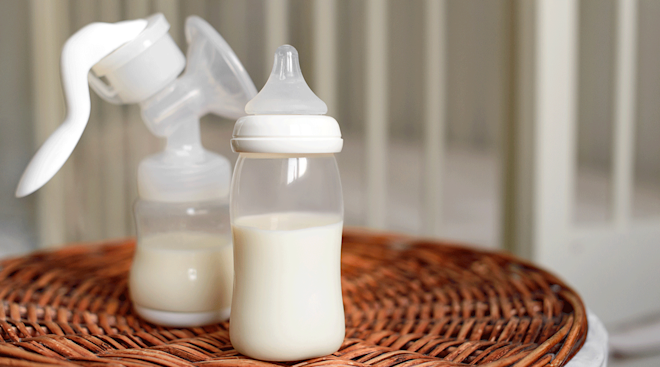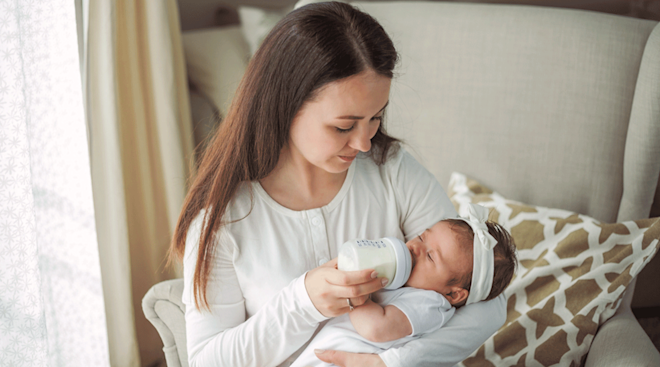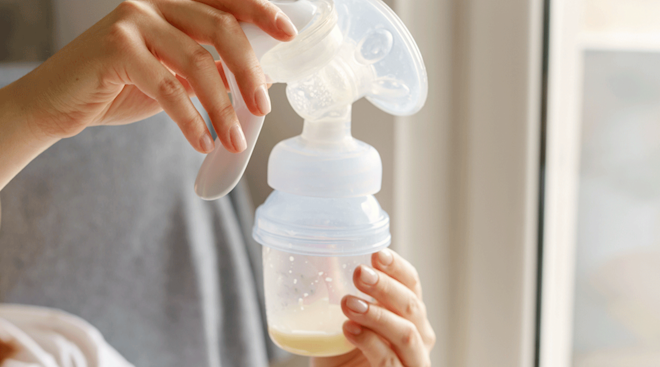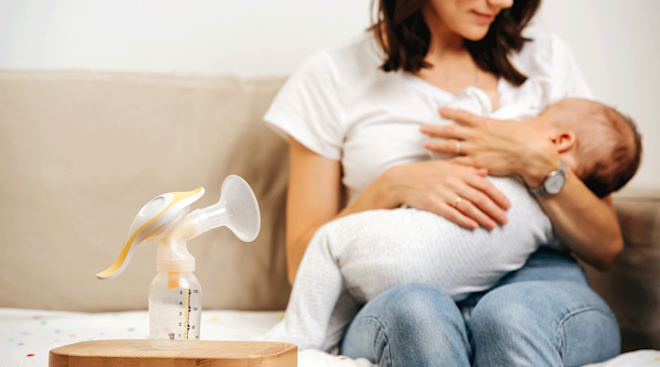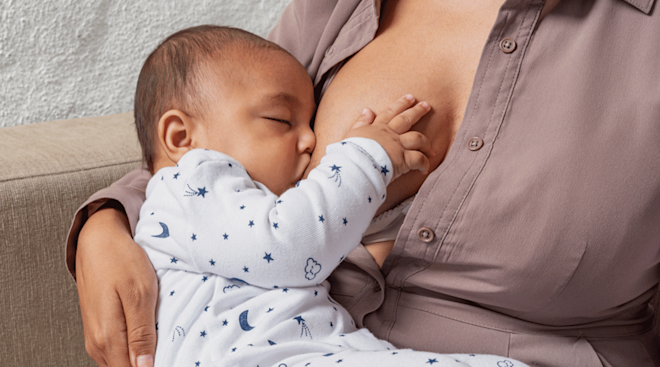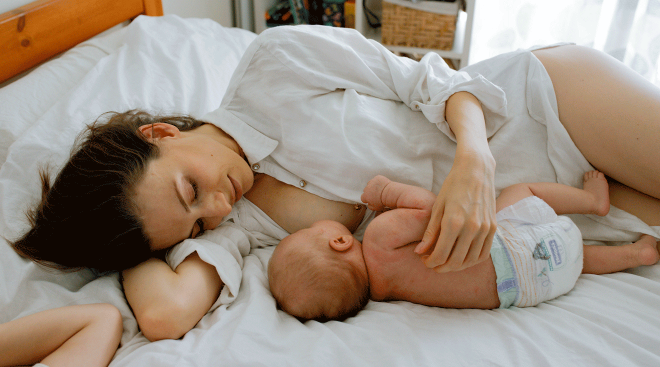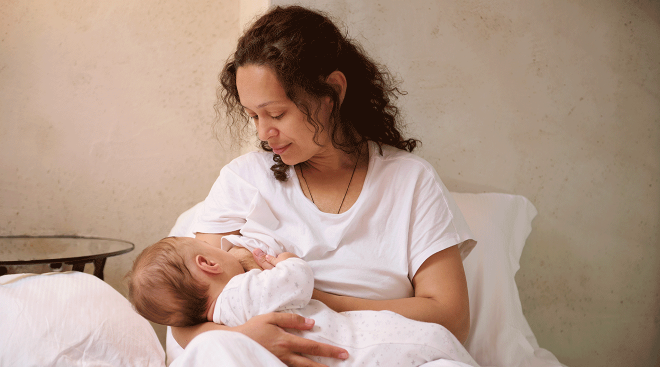6 Creative Ways to Use Breast Milk as a Home Remedy
For moms who decide to (and are able to) breastfeed, there are loads of benefits to enjoy. It can help babies maintain a healthy weight, improve their brain development and, thanks to an ideal mix of antibodies, boost their immune system. And the upsides of breast milk don’t stop there! Beyond nourishing your child, breast milk can serve as a pretty handy home remedy for a number of issues.
“Human milk is truly amazing. It’s like medicine,” says Leigh Anne O’Connor, IBCLC, LCCE, a New York-based lactation consultant. “It’s alive and ever-changing to meet the needs of the baby.” That includes developing antibodies to help babies’ underdeveloped immune systems fight off germs, she explains. As a baby nurses, the germs from their saliva enter Mom’s body, which then produces the necessary antibodies and passes it back to baby through breast milk. (Pretty ingenious, huh?)
Breast milk also contains certain proteins that help protect against infection, explains Alexis Phillips, DO, a Texas-based pediatrician. Those include lactoferrin, which prevents organisms like yeast from growing, and secretory immunoglobulin, which protects baby from bacteria and viruses.
All those protective qualities of breast milk make it an effective natural remedy for a few common ailments. Read on to learn about a few creative uses for breast milk.
“There have been a number of reports on the topical application of human milk as an effective treatment for diaper rash,” Phillips says—including this 2017 study, which found a significant difference in the severity of rash and lesions between babies who were bathed in warm water and pat dry after a dirty diaper versus babies who were treated with breast milk. In this case, moms applied breast milk three times a day on the affected area and let it air dry before putting a diaper back on. Researchers concluded “breast milk can be an effective, safe and convenient remedy.” Similarly, this 2013 study found that breast milk was just as effective in treating diaper rash as hydrocortisone 1 percent ointment alone and reiterated that “human breast milk is an effective and safe treatment for diaper dermatitis in infants.”
Still, over-the-counter diaper rash creams shouldn’t be discounted. At least one other study showed that barrier creams were more effective than breast milk, particularly when treating newborns with moderate to severe diaper rash.
It’s hard to see your little one suffer from congestion, but a nasal aspirator can work wonders. Usually parents squirt a bit of saline solution into baby’s nose first to help break up the mucus before aspirating—but instead of saline, try a bit of breast milk instead! “Breast milk is already buffered, just like saline, so it won’t burn if you put it up the nose,” says Jennifer Ritchie, IBCLC, a lactation consultant and author of The Smart Parents Guide to Breastfeeding. “It works just as well as saline to break up mucus, so it’s commonly recommended by pediatricians.”
When those baby teeth begin to erupt, it can be pretty darn uncomfortable for your little one. Parens often give their baby a teething toy or cold washcloth to gnaw on to help ease the pain, but breast milk—in frozen form—can also provide relief. “Making breast milk ice cubes [or popsicles] is soothing to a teething baby, as it soothes and numbs the gums,” O’Connor says. “Babies like to chomp down when they’re teething, and the frozen milk can be extra nice for this.” Remember, babies shouldn’t be given water until they’re ready to eat solid foods, at about 6 months of age, so expressed milk is a perfect alternative, Ritchie says. Talk about a nutritious teether!
It’s not just teenagers who can suffer from acne–don’t be surprised if your newborn’s skin erupts in tiny red bumps. Usually baby acne is caused by hormones, but yeast that colonizes the skin can also create an inflammatory response. “I commonly recommend breast milk being used to treat neonatal acne because of the anti-inflammatory effects,” Phillips says.
Cradle cap is a common (and benign) baby skin condition. You may notice your infant developing flaky, scaly, yellowish patches on their scalp not long after birth. Hormones are thought to be behind it, although cradle cap can also progress to a yeast infection. You can use olive oil or coconut oil to create a moisture barrier and soften the flakes (making them easier to brush off), as well as breast milk! “Breast milk is a great moisturizer for cradle cap and eczema, which sometimes are related to allergies or a fungal infection,” Phillips says.
Despite our best efforts, our kids are bound to take some spills now and then. When your little one suffers a minor cut or scrape, try dabbing a bit of breast milk onto the skin. “The white blood cells in breast milk would fight bacteria, so that would be recommended,” Ritchie says.
Ready to give one of these creative breast milk uses a go? “If using breast milk for home remedies, it’s important to wash your hands and use clean instruments to transfer the milk from breast to body,” O’Connor cautions. “Sometimes this is as simple as hand-expressing directly onto the affected area,” or you can use a freshly washed spoon, shot glass or medicine dropper. “There only needs to be a few drops to make a difference,” she says.
Fresh milk is going to be the most effective, Ritchie says, since it contains the most living white blood cells. Freshly expressed breast milk can be safely left out for up to four hours or stored in the fridge for up to four days.
About the experts:
Leigh Anne O’Connor, IBCLC, LCCE, is a New York-based lactation consultant with more than 20 years of experience working with breastfeeding families. She is a past president of the New York Lactation Consultant Association (NYLCA) and a member of the International Lactation Consultant Association (ILCA) and United States Lactation Consultant Association (USLCA). Additionally, she has been an accredited La Leche League Leader since 1997.
Alexis Phillips, DO, is a pediatrician with Memorial Hermann Medical Group Pediatrics Atascocita in Atascocita, Texas. She is a graduate of Ohio University Heritage College of Osteopathic Medicine.
Jennifer Ritchie, IBCLC, is a lactation consultant with more than 10 years of experience helping parents navigate breastfeeding challenges. She is also the author of I Make Milk, What’s Your Superpower? and The Smart Parents Guide to Breastfeeding.
Please note: The Bump and the materials and information it contains are not intended to, and do not constitute, medical or other health advice or diagnosis and should not be used as such. You should always consult with a qualified physician or health professional about your specific circumstances. This post contains affiliate links, some of which may be sponsored by paying vendors.
Plus, more from The Bump:
Navigate forward to interact with the calendar and select a date. Press the question mark key to get the keyboard shortcuts for changing dates.

































